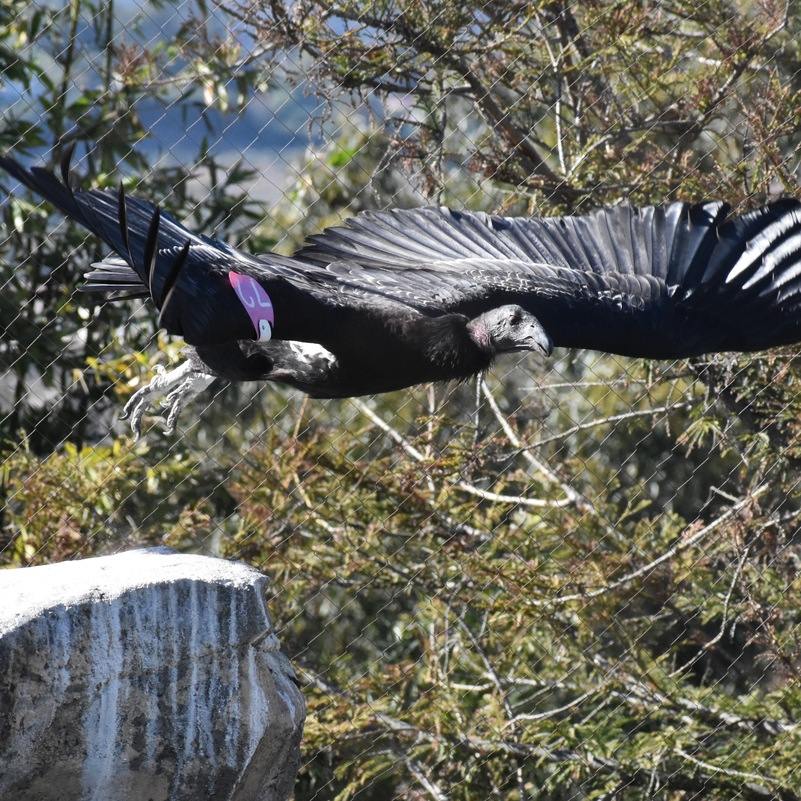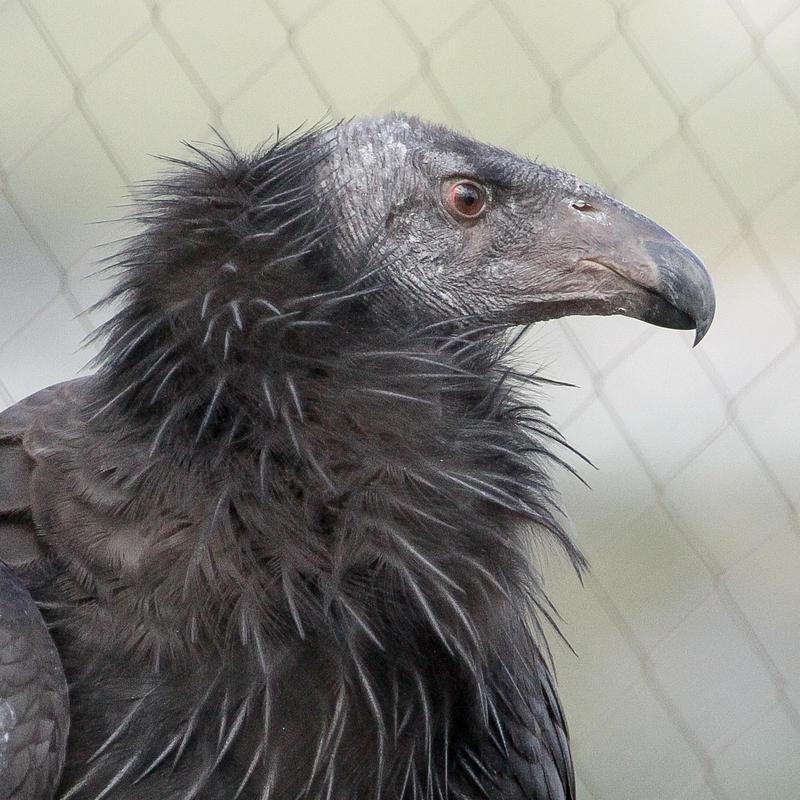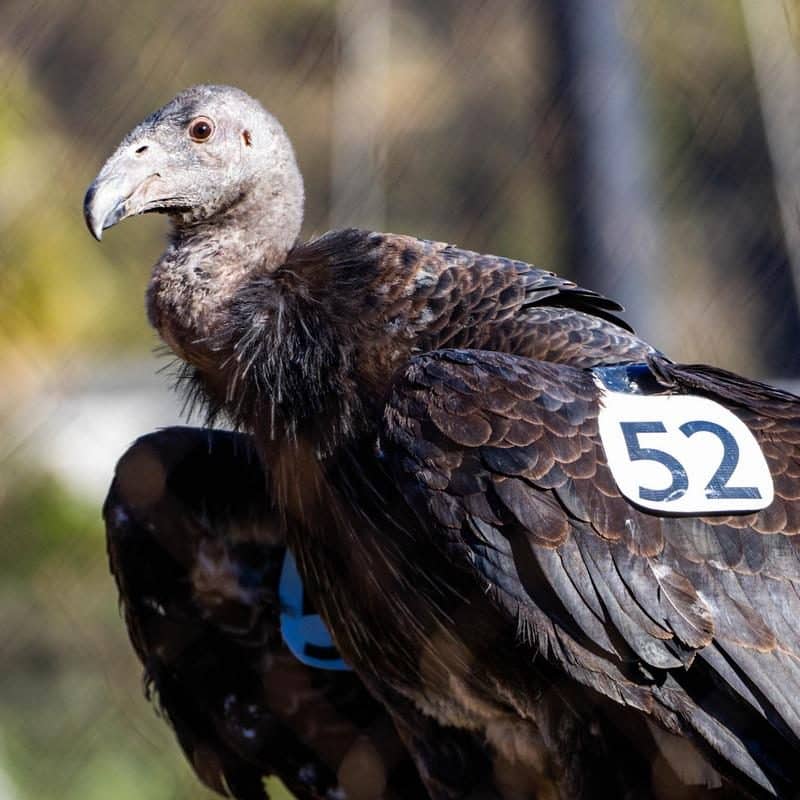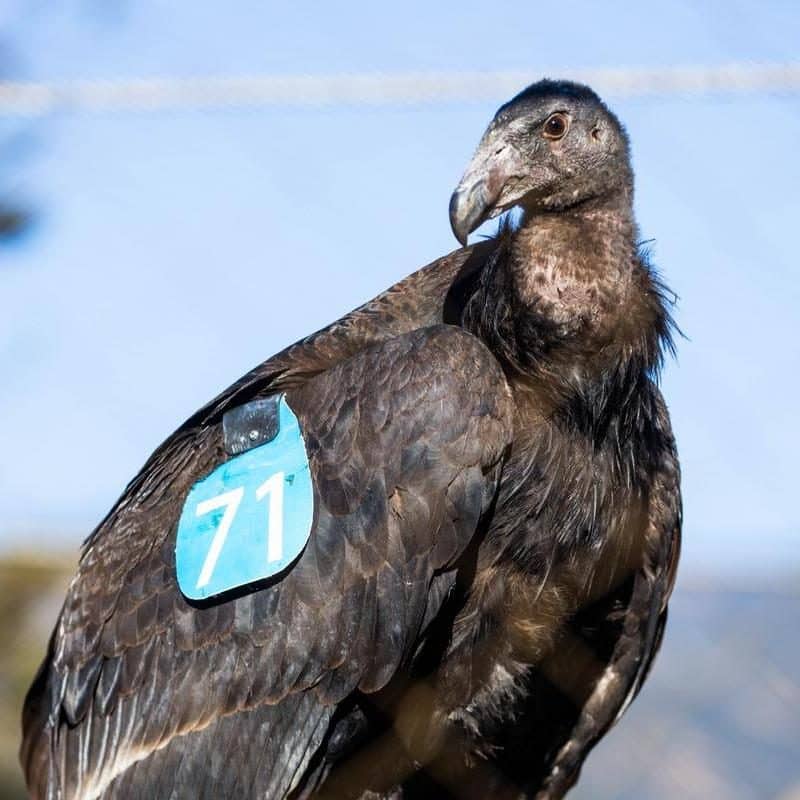A Feathered Flock
The Santa Barbara Zoo’s condors are part of the recovery program and wear wing tags that identify them as individuals. The lower the number, the older the bird.
The Santa Barbara Zoo’s condors are part of the recovery program and wear wing tags that identify them as individuals. The lower the number, the older the bird.




When you sign up for Zoolife, 80% of the proceeds directly fund the Santa Barbara Zoo’s animal care and conservation efforts.
The Santa Barbara Zoo helps monitor wild condors nesting near Hopper Mountain and Bitter Creek National Wildlife Refuges, located in Ventura and Kern counties, respectively. Volunteers and staff from the Zoo and the U.S. Fish & Wildlife Service observe condor nests as part of a long-term study to see if there are differences in parenting styles of wild-reared condors versus captive-reared condors, among other factors.
In 1982, the world’s population of California condors dropped to just 22 individuals. By 1987, the few remaining wild condors had been captured for a captive breeding program. Today, there are more than 500 condors in the world, with more than half flying free in the wild. But there is still work to be done: the IUCN lists them as Critically Endangered.

Some animals are naturally curious, like California condors. But it is not a good idea to feed wildlife. If young and impressionable condors are fed by humans in the wild, they can associate people with food. That is a potentially harmful behavior, for condors and humans. It’s the same with raccoons, deer, and other wildlife you might encounter. Help keep wild animals wild…don’t feed wildlife.